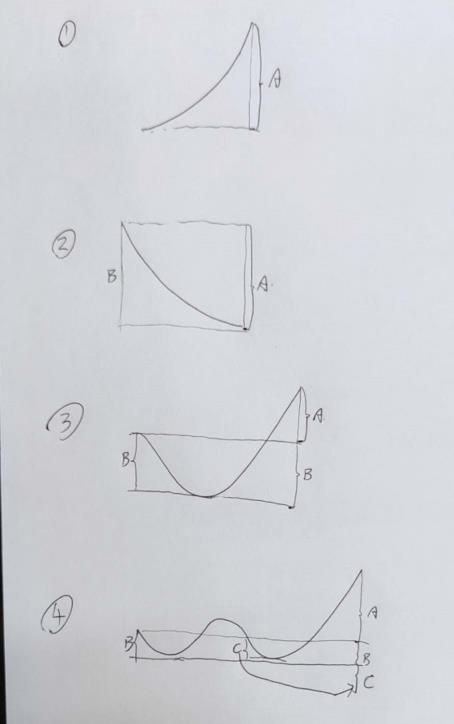普罗米修斯irate/rate算法区别(原创)
Posted 工程师阿杜
tags:
篇首语:本文由小常识网(cha138.com)小编为大家整理,主要介绍了普罗米修斯irate/rate算法区别(原创)相关的知识,希望对你有一定的参考价值。
文章目录
irate算法
流程
-
选取时间范围内最后两个点:end1,end2
-
计算两个点的差值,这里分两种情况:
正常情况下:end2 > end1 ,此时 value = end2 - end1
异常情况下,end2 < end1 ,此时 value = end2
-
计算两个时间点的时间差time = time2 - time1
-
计算最终结果:value / time 并换算毫秒单位
流程图
特点
- 相当于区间内的最后时刻瞬时值
- 只选取了区间最后两个点进行计算
- 如果出现了counter异常类型的值,就会计算出巨大的结果
代码
package promql
var functions = map[string]*Function
"irate":
Name: "irate",
ArgTypes: []ValueTypeValueTypeMatrix,
ReturnType: ValueTypeVector,
// 处理函数 funcIrate
Call: funcIrate,
,
// irate 方法
func funcIrate(vals []Value, args Expressions, enh *EvalNodeHelper) Vector
// 注意,最后一个参数 isRate = true
return instantValue(vals, enh.out, true)
// irate 算法内容
// isRate = true
func instantValue(vals []Value, out Vector, isRate bool) Vector
for _, samples := range vals[0].(Matrix)
if len(samples.Points) < 2
// 少于两个点,无效范围
continue
// 取区间内最后两个数值
// endindex 的点位
lastSample := samples.Points[len(samples.Points)-1]
// endindex - 1 的点位
previousSample := samples.Points[len(samples.Points)-2]
var resultValue float64
// irate计算时 isRate = true
if isRate && lastSample.V < previousSample.V
// counter 中出现了明显的异常点,最后两个值是 大--小 的结构,因此 counter 重置
resultValue = lastSample.V
else
// 最后两个值是 小--大 的结构,因此直接相减
resultValue = lastSample.V - previousSample.V
/* 此时 resultValue有两种情况:
1、正常情况时,resultValue=最后两个点的差值,
2、counter 类型异常时,resultValue=最后选取的点的值,
*/
// 两个值的时间间隔
sampledInterval := lastSample.T - previousSample.T
if sampledInterval == 0
// 选取的两个点时间差为0.要舍弃,否则除以0最终会是无限大
continue
// irate 时 isRate = true
if isRate
// 变化值除以时间间隔,这里的1000看来默认时间单位是秒,这里除以1000,换算成毫秒?
// 此时如果 counter 遇到了 重置点, 那么这里计算出来的值会【异常的大】
resultValue /= float64(sampledInterval) / 1000
out = append(out, Sample
Point: PointV: resultValue,
)
return out
rate函数
流程
-
查找点集合的值差
如果始终 next > current,那么 value = end - begin
如果中间存在 A = next < current,那么 value = end - begin + 每个异常的落差A
-
计算点集合的时间跨度比例P
计算开头、结尾空隙
计算时间跨度的有效值与时间范围的比例P
-
按照P等比例扩大value的值
-
计算最终结果: value/区间时间跨度
流程图
计算点集合落差的异常值
目的&特点:无论中间是否出现倒序情况,都能算出近似于总落差的值

等比例扩大区间的理解

特点
-
相当于区间内的平均值
-
读取了区间内最后一个点与第一个点的差值
-
又等比例扩大了点集合的时间范围到区间跨度
-
因此计算比irate较为严谨
代码
var functions = map[string]*Function
// rate 方法入口
"rate":
Name: "rate",
ArgTypes: []ValueTypeValueTypeMatrix,
ReturnType: ValueTypeVector,
Call: funcRate,
,
// rate 入口
func funcRate(vals []Value, args Expressions, enh *EvalNodeHelper) Vector
// isRate = true
return extrapolatedRate(vals, args, enh, true, true)
// 算法实现
func extrapolatedRate(vals []Value, args Expressions, enh *EvalNodeHelper, isCounter bool, isRate bool) Vector
ms := args[0].(*MatrixSelector)
var (
// 默认是毫秒单位
matrix = vals[0].(Matrix)
rangeStart = enh.ts - durationMilliseconds(ms.Range+ms.Offset)
rangeEnd = enh.ts - durationMilliseconds(ms.Offset)
)
for _, samples := range matrix
// No sense in trying to compute a rate without at least two points. Drop
// this Vector element.
if len(samples.Points) < 2
continue
var (
counterCorrection float64
lastValue float64
)
for _, sample := range samples.Points
// Counter类型数据,但是数值又小于上一次的 value,说明重置了 counter
// 否则的话,这个值一直为空
if isCounter && sample.V < lastValue
// 所有异常节点的差值累计
counterCorrection += lastValue
// 由于是 for 循环,因此这里的 lastValue 最终就是当前点集合最后一个点的值
lastValue = sample.V
// 集合首位两个点的差值。 集合最后一个点的值 - 第一个点的值,最后加上了定时器重置的 counter(一般为0)
// 这个 counterCorrection 的理解可以参考下图,是计算的关键点
resultValue := lastValue - samples.Points[0].V + counterCorrection
// 区间开始时间与 第一个点的时间间隔
durationToStart := float64(samples.Points[0].T-rangeStart) / 1000
// 最后一个点与区间结束时间之间的时间空间,具体算法: 区间结束的时间-区间最后一个点的时间,就是 最后一个点与区间结尾之间的时间间隔
durationToEnd := float64(rangeEnd-samples.Points[len(samples.Points)-1].T) / 1000
// 区间内所有点的时间差,也就是区间最后一个点时间 - 区间第一个点时间
sampledInterval := float64(samples.Points[len(samples.Points)-1].T-samples.Points[0].T) / 1000
// 区间内采集点占用的平均时间,也就是 总集合点时间/总点数
averageDurationBetweenSamples := sampledInterval / float64(len(samples.Points)-1)
if isCounter && resultValue > 0 && samples.Points[0].V >= 0
// Counters cannot be negative. If we have any slope at
// all (i.e. resultValue went up), we can extrapolate
// the zero point of the counter. If the duration to the
// zero point is shorter than the durationToStart, we
// take the zero point as the start of the series,
// thereby avoiding extrapolation to negative counter
// values.
// 这里较为难理解,目的: 区间内是一个递增的序列,假设这个序列是线性的,那么要寻找,这个线性序列的值为0的那个点所在的时间点
// 如果这个0所在的时间点在第一个点左边,那么就要砍掉0值左侧的区域
// 比如 1 3 5 7这个序列,那么推测的0值位置就在 6*(1/6) = 1,也就是说这个线性序列的0值就是开始的位置
durationToZero := sampledInterval * (samples.Points[0].V / resultValue)
if durationToZero < durationToStart
// 如果中间counter重置了,这里好像是在找重置时那个0点的位置,我们将会把区间起点调整到0点附近
// 如果选择的序列所推测的的0值位置在时间开始与第一个节点之间的位置,那么就要调整整个有效区间的开始位置
durationToStart = durationToZero
// If the first/last samples are close to the boundaries of the range,
// extrapolate the result. This is as we expect that another sample
// will exist given the spacing between samples we've seen thus far,
// with an allowance for noise.
// 噪音处理,因为点集合的区间实际上小于时间区间,两边有一段空白,因此这里 *1.1 来扩大了一下点集合的区间范围
extrapolationThreshold := averageDurationBetweenSamples * 1.1
// 默认是所有集合点的时间差
extrapolateToInterval := sampledInterval
// 将点集合与区间两端的时间空隙添加到 extrapolateToInterval 中
if durationToStart < extrapolationThreshold
// 决定最终区间的起点
extrapolateToInterval += durationToStart
else
extrapolateToInterval += averageDurationBetweenSamples / 2
if durationToEnd < extrapolationThreshold
// 决定区间的终点
extrapolateToInterval += durationToEnd
else
extrapolateToInterval += averageDurationBetweenSamples / 2
// extrapolateToInterval 是经过调整的区间长度,添加了 集合点与时间区间两端的时间空隙,因此 extrapolateToInterval 会比 sampledInterval 大一点
// 这个操作等于按照 实际时间区间/集合点时间区间 这个比例,把 resultValue 这个集合点两端的差值等比例扩大
resultValue = resultValue * (extrapolateToInterval / sampledInterval)
if isRate
// 利用等比例扩大后的插值,除以时间间隔。计算最终的每次 for 循环的变化率
resultValue = resultValue / ms.Range.Seconds()
enh.out = append(enh.out, Sample
Point: PointV: resultValue,
)
return enh.out
以上是关于普罗米修斯irate/rate算法区别(原创)的主要内容,如果未能解决你的问题,请参考以下文章